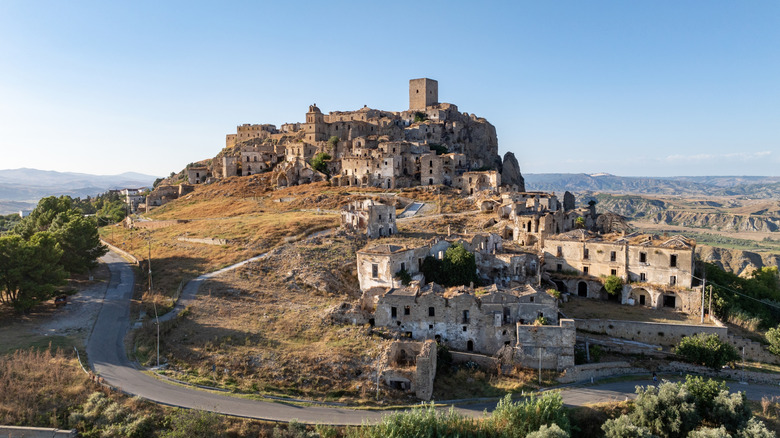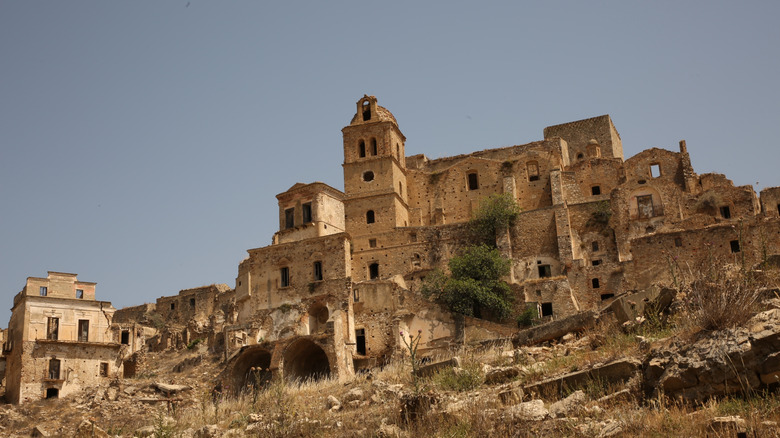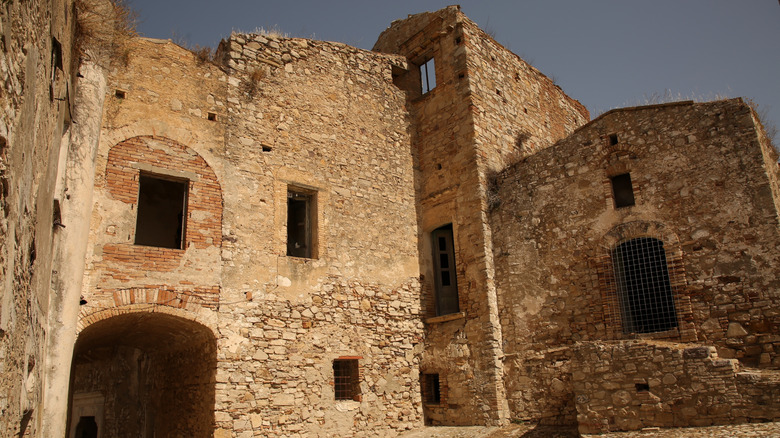Italy's Little-Known Abandoned Hillside Ghost Town Promises Picturesque Views And Mystery
Perched atop a steep hill in the province of Matera in the southern Italian region of Basilicata, the ghost town of Craco offers visitors a haunting glimpse into medieval Italy. This abandoned settlement, with its crumbling buildings and rich history, has become a captivating destination for adventurous travelers and filmmakers alike. While the country is home to many well-known and even overrated tourist destinations, Craco is a wonderful off-the-beaten-track experience for those seeking to explore some of Italy's lesser-known treasures.
The best time to visit Craco depends largely on your personal preferences and what you hope to experience during your trip. For those seeking warm, dry weather ideal for exploring the outdoor ruins, it's recommended that you visit between mid-June and early September, but the summer months also tend to be the busiest for tourism in Italy. If you plan your visit between May and October, you'll be able to experience some of the religious festivals and local culture that bring Craco back to life. To avoid the peak summer heat, visit in late spring or early fall and enjoy pleasant temperatures and fewer crowds.
If you're interested in photography, the haunting beauty of Craco is particularly noticeable during sunrise and sunset. The golden hour just before sunset will offer the best conditions for photography, but the landscape surrounding the town makes for stunning backdrops no matter the hour. One of its most striking features is the presence of "calanchi," or badlands. These geological formations create a dramatic, almost lunar-like, landscape that contrasts sharply with the medieval architecture of the town.
The rise and fall of Craco
Much like nearby Matera, one of Italy's oldest cities, Craco boasts a rich history that spans centuries, making it a fascinating destination for history enthusiasts. Its story stretches back to the 6th century AD, when it was first settled by the Greeks, though evidence of human presence in the area dates back to the 8th century BC. The town's strategic hilltop location provided excellent visibility of the surrounding valleys, making it ideal for defense against invaders. However, this same geography would ultimately contribute to its downfall.
Throughout its long history, Craco weathered numerous challenges. It survived the Black Plague in the mid-1600s, overthrew feudal rule, and even endured and outlasted Napoleonic occupation. By 1815, the town had grown so large that it was split into two districts. However, the late 19th century marked the beginning of Craco's decline; poor agricultural conditions led to severe famine, causing a mass exodus that saw about 1,300 residents migrate to North America.
The final blow to Craco came in the mid-20th century, when a series of natural disasters forced the remaining inhabitants to evacuate. In 1963, 1,800 residents relocated to a nearby valley, Craco Peschiera, and subsequent floods and an earthquake sealed the town's fate, with the last of its residents leaving in the mid-80s.
Exploring Craco today
Today, Craco stands as a testament to the power of nature and the passage of time. Its brown brick buildings dot the hillside, creating an eerily beautiful silhouette against the sky. Visitors can explore the ruins under the guidance of local experts, marveling at the decaying structures that once housed a thriving community of 2,500 in its heyday.
Despite its abandonment, Craco continues to captivate. The town hosts religious festivals between May and October, bringing life back to its dilapidated streets, if only temporarily. Some of the notable celebrations in and close to Craco include the Madonna Della Stella festival, a significant religious celebration in Craco's old town; the San Nicola festival, honoring the important figure of Saint Nicholas; and San Vincenzo Martire Feast Day, honoring Saint Vincent the Martyr. These festivals demonstrate the enduring spiritual connection the local community maintains with Craco and serve as a way to preserve the town's cultural heritage. Craco's unique atmosphere has also attracted filmmakers, with Craco featuring in notable productions like the 2004 film "The Passion of the Christ" and the 2008 James Bond film "Quantum of Solace."
As Craco slowly succumbs to the elements, it offers a poignant reminder of the country's rich history and the ongoing challenges faced by rural communities and is one of Italy's ancient cities that travelers should not overlook. This "ghost town," once a bustling center of life, now stands as a hauntingly beautiful monument to the past, inviting visitors to step back in time and explore its mysterious, abandoned streets.


